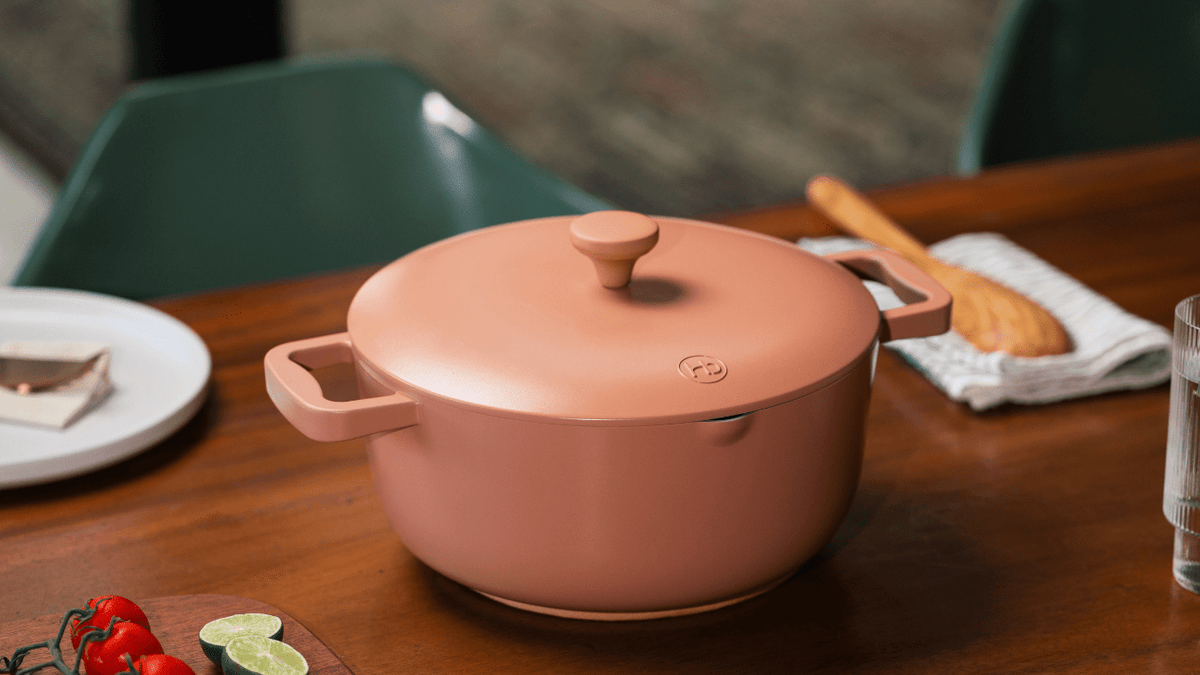
How to Clean and Care for your Homebody Nonstick Ceramic Cookware
|
Time to read 4 min
|
Time to read 4 min
Upgrading your kitchen with Homebody’s toxin-free, Swiss ceramic cookware is a smart investment in healthier, eco-conscious cooking. Unlike conventional non-stick pans that may contain harmful PTFE and PFAS chemicals , Homebody cookware is SGS-certified , ensuring it’s free from toxins, heavy metals, and other harmful substances. Crafted with sustainable materials and responsible manufacturing, this cookware not only supports your well-being but also contributes to a healthier planet.
However, to maximize the lifespan and performance of your Homebody nonstick ceramic cookware , proper cleaning and maintenance are essential. While ceramic cookware is known for its durability, improper care can reduce its effectiveness over time . In this comprehensive guide, we'll cover everything you need to know about cleaning, maintaining, and protecting your cookware so that it stays in excellent condition for years to come.
Caring for your ceramic cookware is about more than just keeping it looking shiny and new —it directly affects how well it performs and how long it lasts. Here’s why proper care is crucial:
Now that you know why proper care is important, let’s dive into the best ways to clean and maintain your Homebody ceramic cookware.
After cooking, allow your Homebody cookware to cool completely before washing. Rinsing a hot pan under cold water can cause thermal shock , which may lead to warping or cracking.
If food is stuck-on , avoid scraping aggressively . Instead, use a simple soapy simmering method :
This method loosens stubborn food particles without damaging the non-stick coating.
Using harsh detergents, bleach, or abrasive cleaning tools can erode the ceramic coating over time. Always use:
For burnt-on food or discoloration , baking soda is a great natural cleaner:
This removes stains without scratching the surface.
The bottom of your pan can accumulate grease and stains over time. Use a mixture of:
This keeps the cookware looking like new .
Stacking your cookware without protection can lead to scratches. To prevent damage:
One of the most common issues with ceramic cookware is burnt-on residue caused by overheating oils. Understanding oil smoke points can help prevent sticky, burnt buildup.
| Oil Type | Smoke Point (°F / °C) | Best Used For |
|---|---|---|
| Avocado Oil | 520°F / 271°C | High-heat cooking, searing |
| Canola Oil | 400°F / 204°C | General cooking, sautéing |
| Coconut Oil | 350°F / 177°C | Medium-heat cooking |
| Olive Oil | 320-410°F / 160-210°C | Sautéing, light frying |
| Peanut Oil | 450°F / 232°C | High-heat frying, stir-frying |
| Sesame Oil | 410°F / 210°C | Stir-frying, Asian dishes |
To protect your ceramic cookware , keep your heat medium or lower and avoid sudden temperature changes .
Beyond daily cleaning, here are some additional care tips to ensure your cookware remains in top condition :
Even with proper care, ceramic cookware doesn’t last forever . Here’s how to know when it’s time for a replacement:
Just like running shoes wear out , ceramic cookware will eventually show signs of aging . Keeping an eye on its condition ensures you’re always cooking with safe, effective tools .
Taking proper care of your Homebody non-stick ceramic cookware ensures better cooking performance, easier cleanup, and a longer lifespan . By following these cleaning and maintenance tips , you can keep your ceramic cookware looking and working like new for years to come.
Ready to upgrade your kitchen with toxin-free, high-performance cookware ? Explore our Homebody ceramic cookware collection today!
Although Homebody cookware is technically dishwasher-safe , it’s best to hand wash to preserve the non-stick coating.
Try cleaning with baking soda paste and avoid high heat cooking . If food continues to stick , it might be time for a replacement.
Avoid cooking sprays , as they can create a sticky residue . Use natural oils instead.
Overheating oils or burnt food can cause stains. Use a vinegar-water mix or baking soda paste to clean.
No, metal utensils can scratch the non-stick coating . Always use wooden or silicone tools .
Stack carefully with pan protectors or store pans hanging to avoid scratches.